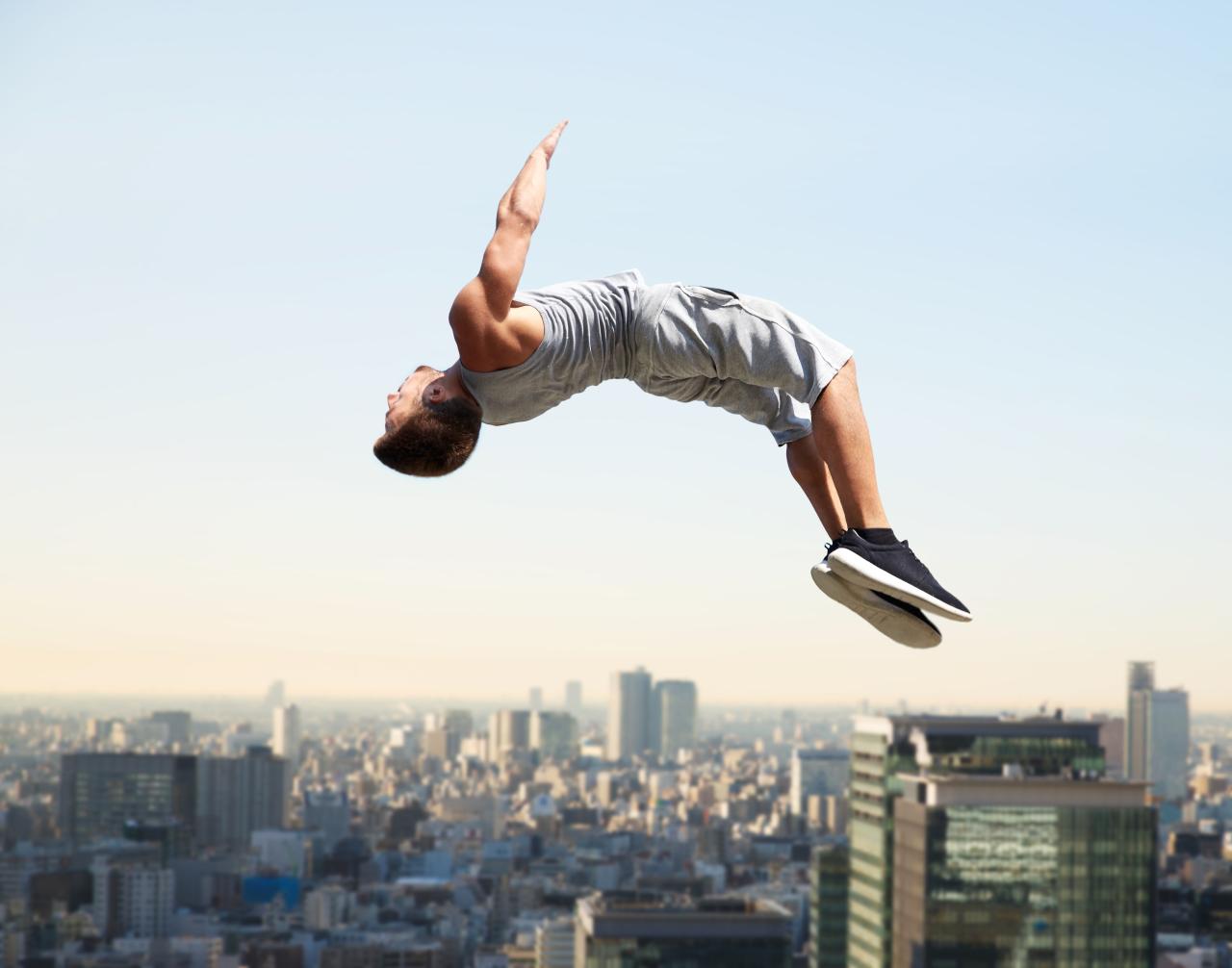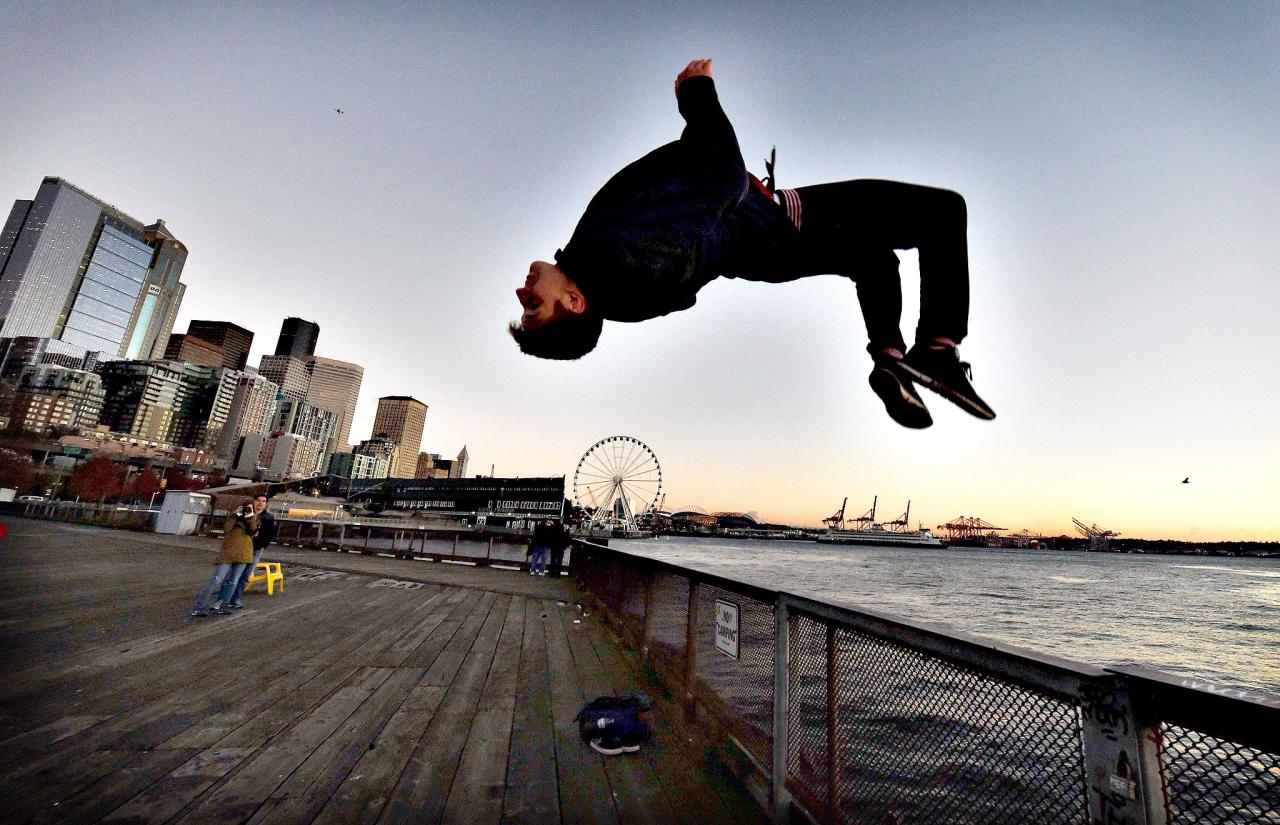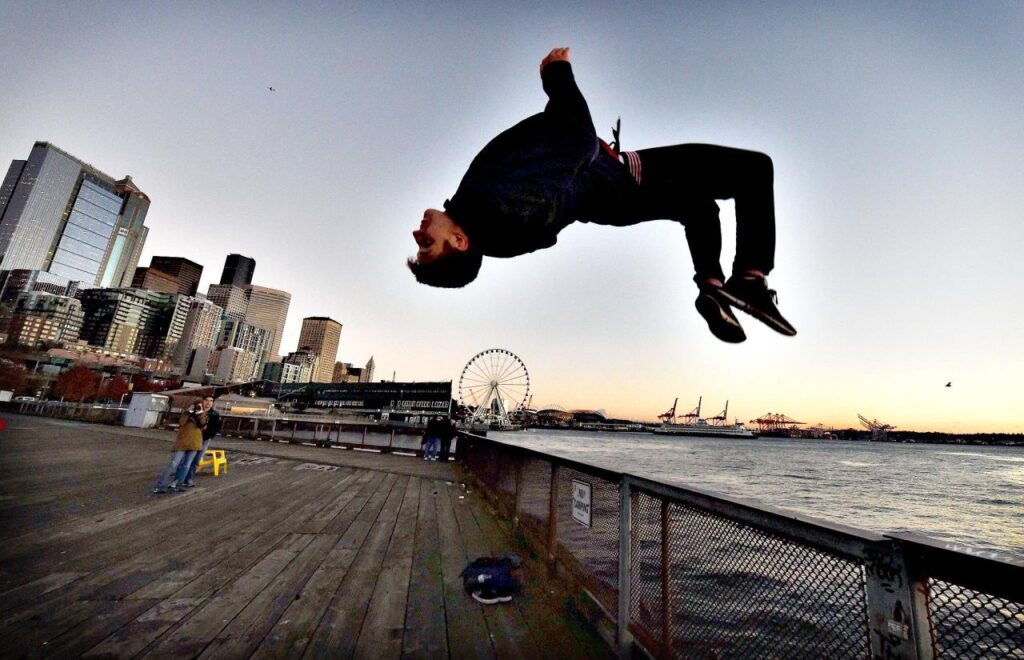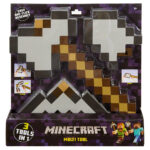Parkour race encapsulates the thrilling evolution of a sport that transforms urban environments into exhilarating obstacle courses. Born from the dedication of practitioners who sought to navigate their surroundings with fluidity and style, parkour racing has evolved into a competitive format that emphasizes speed, agility, and creativity. Unlike traditional parkour, which focuses on individual expression, parkour racing introduces elements of competition, challenging athletes to outperform one another while showcasing their remarkable skills.
At its core, a parkour race combines various techniques such as vaults, flips, and precision jumps, requiring athletes to master physical prowess and mental focus. As participants dash through courses designed to test their limits, the sport’s community continues to grow, fueled by local clubs and global events that celebrate the art of movement.
Overview of Parkour Racing

Parkour racing, an exhilarating fusion of athleticism and speed, has emerged as a significant evolution of traditional parkour. Originating from the training methods of military obstacle course techniques, parkour has transitioned from a form of urban exploration to a competitive sport, drawing in enthusiasts and athletes alike. This evolution has given rise to parkour racing, where speed, agility, and precision are key in navigating obstacles within a timed format.
Traditional parkour emphasizes fluid movement and creative expression in overcoming urban obstacles, while parkour racing introduces a structured competitive element. In racing formats, athletes are judged not only on their speed but also on their efficiency and technique as they navigate courses designed with specific challenges. The focus shifts from self-expression to competition, where the goal is to complete a designated course in the shortest time possible.
Key Elements of Parkour Racing, Parkour race
Several factors define a parkour race, distinguishing it from its traditional counterpart. Understanding these elements is crucial for both participants and spectators. Below are the significant components that characterize a parkour race:
- Course Design: Parkour racing courses are intentionally designed with a series of obstacles such as walls, rails, and gaps that require a combination of jumping, climbing, and vaulting skills. Each course is crafted to challenge the athletes’ abilities while ensuring safety and engagement.
- Time Trials: Races usually follow a time trial format, where competitors aim to complete the course as quickly as possible. This competitive element adds a thrilling aspect, pushing athletes to refine their techniques and optimize their routes.
- Judging Criteria: Competitors are often assessed based on speed, technique, and creativity. Judges may evaluate how well each athlete navigates the obstacles, their form during jumps and landings, and the efficiency of their movements.
- Team Events: Some parkour races include team formats, where groups of athletes work together to complete the course. This adds a collaborative dynamic, emphasizing communication and strategy among team members.
- Safety Measures: Given the high-risk nature of parkour, safety is paramount. Competitions often incorporate safety gear and have medics on-site. The design of obstacles also considers the risk of injury, ensuring that participants can perform the moves required with minimized danger.
Parkour racing transforms individual expression into a dynamic race against the clock, blending creativity with competition.
Techniques and Skills in Parkour Racing
Parkour racing combines agility, speed, and creativity in navigating obstacles. To excel in this dynamic sport, practitioners must master a variety of techniques that enhance their efficiency and performance. In this segment, we explore fundamental techniques, essential physical skills, and effective training methods that define parkour racing.
Essential Techniques in Parkour Racing
The cornerstone of parkour racing lies in its diverse techniques, which allow individuals to traverse environments with fluidity and precision. Key techniques include:
- Vaults: Vaulting is a critical technique used to overcome barriers. Common vaults include the speed vault, which involves placing the hands on the obstacle while propelling the body forward, and the kong vault, where both arms push off the object while the legs tuck in. Mastering vaults allows for quick transitions between obstacles.
- Flips: Flips, such as backflips and front flips, add an acrobatic flair to parkour racing. They can be utilized to navigate heights safely or to perform stylish landings. Practicing flips requires a solid understanding of body control and spatial awareness.
- Precision Jumps: Precision jumps involve leaping from one point to another with accuracy, often landing on narrow surfaces. This technique is crucial for navigating urban environments and requires exceptional balance and coordination.
Physical Skills Required for Effective Parkour Racing
To perform parkour racing efficiently, a range of physical skills is essential. These skills contribute to the overall proficiency and safety of the practitioner. Important physical skills include:
- Strength: A strong upper body facilitates effective vaulting and climbing, while leg strength aids in powerful jumps and swift landings.
- Agility: Agility allows for quick directional changes and smooth transitions between movements. Practicing agility drills can significantly enhance performance in parkour racing.
- Endurance: Building cardiovascular endurance enables athletes to maintain high energy levels throughout the race, ensuring they can sustain their performance over longer distances.
- Flexibility: Flexibility in joints and muscles is crucial for executing techniques like flips and precision jumps, reducing the risk of injury during training and competition.
Training Methods to Enhance Agility and Speed
To become proficient in parkour racing, targeted training methods are crucial. These methods focus on improving agility and speed, essential components for successful navigation of obstacles. Notable training methods include:
- Obstacle Courses: Setting up obstacle courses helps simulate real-world environments, providing practical experience with various techniques.
- Drills and Repetitions: Repeatedly practicing specific movements, such as vaults or jumps, helps build muscle memory and confidence.
- Strength and Conditioning Exercises: Incorporating exercises like plyometrics and bodyweight training enhances overall strength and explosive power, directly benefiting parkour performance.
- Footwork Drills: Engaging in footwork drills improves speed and agility, allowing practitioners to navigate obstacles more fluidly.
“Parkour is not just a physical activity; it’s a mindset of overcoming challenges and pushing boundaries.”
Parkour Race Events and Competitions
Parkour racing has grown in popularity around the globe, leading to a variety of events and competitions that showcase the skills and creativity of athletes. These races not only test the speed and agility of participants but also highlight the unique urban landscapes through which they navigate. Understanding the different types of parkour racing events, their rules, formats, and the role of judges is essential for anyone interested in this dynamic sport.
Types of Parkour Racing Events
Numerous parkour racing events occur worldwide, each with its own flavor and structure. These events can range from informal local competitions to large international tournaments.
- Urban Parkour Competitions: These are typically held in city environments, utilizing natural urban obstacles like walls, rails, and rooftops. Participants race against the clock or each other, showcasing their speed and creativity.
- Obstacle Course Races (OCR): These events combine elements of parkour with traditional obstacle course challenges, requiring competitors to navigate a series of physical barriers in the fastest time possible.
- Freestyle Parkour Events: While not strictly a race, these competitions allow participants to perform tricks and stunts judged on creativity, difficulty, and execution. Time may be a factor, but the emphasis is on style.
- Team Races: In team formats, groups of athletes collaborate to complete a course, often with specific strategies to help each member overcome obstacles efficiently.
Comparison of Rules and Formats
Various parkour competitions have distinct rules and formats that define how participants engage in the events. These regulations ensure a level playing field and maintain the integrity of the sport.
- Time Trials: In time trial formats, competitors race individually against the clock, with the fastest times determining the winners. This format is common in urban parkour events.
- Head-to-Head Races: In this format, two participants compete directly against each other on parallel courses. The first to finish wins, adding an element of strategy to the race.
- Scoring Systems: Generally, scoring can be based on a combination of time and technical execution. Judges may award points for style, creativity, and difficulty, especially in freestyle events.
- Elimination Rounds: Some competitions employ elimination rounds where the slowest participants are removed after each stage, intensifying the competition and showcasing the fastest athletes.
Role of Judges and Scoring Systems
Judges play a crucial role in parkour racing events, ensuring that competitions are fair and that athletes are evaluated according to standardized criteria. Their decisions can significantly influence outcomes.
- Scorecards: Judges often use scorecards to evaluate performances based on set criteria such as completion time, difficulty of maneuvers, and overall style. Each criterion is assigned a point value, contributing to the final score.
- Video Review: In some high-stakes competitions, video review may be employed to analyze runs deeply. This helps judges confirm scores and make accurate assessments of performance.
- Consistency and Transparency: Competitions strive for consistency in scoring by training judges and establishing clear guidelines. Transparency in scoring can enhance trust among competitors and fans.
Safety and Risk Management: Parkour Race
Participation in parkour racing comes with inherent risks, primarily due to the nature of the sport which involves high-impact, dynamic movements across various terrains. To minimize these risks, understanding common injuries and implementing effective preventive measures is crucial. Ensuring proper warm-up and cool-down routines, along with the use of appropriate safety gear, can significantly enhance a parkour racer’s safety and performance.
Common Injuries and Preventive Measures
Injuries in parkour racing can occur due to falls, improper landings, or overexertion. The most common injuries include sprains, fractures, and abrasions. Preventing these injuries requires a multifaceted approach:
- Sprains and Strains: These often result from sudden movements or falls. To prevent them, engage in flexibility exercises that enhance range of motion and strength training to support joints.
- Fractures: These can occur during high falls. Practicing proper landing techniques and gradually increasing difficulty levels helps mitigate these risks.
- Abrasions and Cuts: These injuries frequently happen from contact with rough surfaces. Wearing protective clothing can provide a barrier against skin damage.
Importance of Warm-Up and Cool-Down Routines
Warm-up and cool-down routines are essential components of any training regimen in parkour racing. A well-structured warm-up prepares the body for the physical demands of the sport, while cool-down routines facilitate recovery. The following benefits highlight their importance:
- Warm-Up Benefits: Increases blood flow to muscles, enhances flexibility, and prepares mentally for performance.
- Cool-Down Benefits: Aids in muscle recovery, reduces soreness, and helps in lowering heart rate gradually.
Recommended Safety Gear and Equipment
Using appropriate safety gear is vital in minimizing the risk of injury during parkour racing. Essential equipment includes:
- Footwear: Shoes with good grip and cushioning are crucial for landing safely and maintaining balance.
- Padded Clothing: Wearing padded shorts and long sleeves can offer protection against falls and abrasions.
- Knee and Elbow Pads: These provide extra cushioning for joints during high-impact activities.
- Helmets: While not always mandatory, wearing a helmet can protect against head injuries during falls.
Adopting proactive safety measures not only enhances performance but also fosters a culture of safety within the parkour community.
Community and Culture of Parkour Racing
The world of parkour racing is not just about the physical activity but also encompasses a vibrant community and culture that thrives on collaboration, creativity, and inclusivity. Parkour racing has evolved into a global phenomenon that brings together practitioners from various backgrounds, united by their passion for movement and overcoming obstacles. This community fosters connections through training sessions, events, and social media platforms, creating an extensive network of enthusiasts and supporters.
The global parkour racing community is enriched by a diverse array of influencers, from seasoned athletes to emerging stars. These individuals often share their skills, techniques, and experiences, inspiring others to participate and develop their own abilities. Influencers play a significant role in shaping the culture of parkour racing by creating content that showcases the artistry and athleticism involved in the discipline. Their presence on social media platforms has been pivotal in promoting the sport, allowing practitioners to connect with one another and share tips, challenges, and accomplishments.
Influencers and Their Impact
The rise of social media has transformed the way parkour racing is promoted and perceived. Influencers, such as professional parkour athletes, trainers, and content creators, utilize platforms like Instagram, TikTok, and YouTube to showcase their skills and interact with the community. Their engaging videos often feature innovative movements, challenges, and tutorials, which not only entertain but also educate viewers on proper techniques and safety measures. As a result, these platforms serve as vital tools for expanding the reach of parkour racing.
Prominent figures in the parkour community, such as David Belle, the co-founder of parkour, and other athletes like Ronnie Shalvis and Kie Willis, regularly produce content that highlights the culture of parkour racing. Their contributions have led to the establishment of global challenges and virtual competitions that encourage widespread participation, further solidifying the community’s unity.
Local Parkour Racing Groups and Clubs
Getting involved in local parkour racing groups or clubs is an excellent way to immerse oneself in the culture and community. These groups often organize training sessions, workshops, and events that cater to various skill levels, from beginners to advanced practitioners. Joining a local parkour club provides individuals with the opportunity to learn from experienced athletes, improve their skills, and connect with fellow enthusiasts.
To find a local parkour group, one can explore various avenues:
- Search online for parkour groups in your area using social media platforms or community forums.
- Visit dedicated websites or apps that list parkour events and groups, such as Parkour Earth or the Parkour Community.
- Attend local events or workshops that may be advertised in parks, gyms, or through community centers.
- Engage with local fitness communities that may also have parkour components or collaborations.
By participating in these groups, individuals not only enhance their physical abilities but also become part of a supportive network that shares a common passion for parkour racing. The sense of camaraderie and shared experiences contributes to the overall culture, making the practice more enjoyable and fulfilling.
Future of Parkour Racing
As parkour racing continues to evolve, its future is shaped by technological advancements, cultural shifts, and the growing recognition of its potential within the sports arena. The integration of technology and the push for mainstream acceptance could redefine how parkour racing is practiced and perceived.
Emerging trends in parkour racing highlight the increasing incorporation of technology. From augmented reality (AR) apps to wearable devices that track performance metrics, technology is poised to enhance training methods and competitive experiences. These innovations not only allow athletes to analyze their movements but also provide spectators with immersive viewing experiences during races.
Technology Integration in Parkour Racing
The integration of technology into parkour racing is generating excitement and interest. This evolving landscape includes various innovations that can enhance both training and competition. The following are key technological advancements:
- Wearable Technology: Devices such as smart watches and fitness trackers are being used to monitor heart rate, speed, and jump height, allowing athletes to tailor their training regimens effectively.
- Augmented Reality (AR): AR applications can visualize complex parkour routes, helping athletes practice and perfect their techniques in a simulated environment before attempting them in real life.
- Video Analysis: High-speed cameras and software that analyze movement can provide critical feedback to athletes, facilitating improvements and helping reduce injury risk.
- Live Streaming Platforms: With the rise of social media and live streaming, parkour events can reach wider audiences, allowing fans to engage with races in real-time.
As these technologies become more accessible, they will likely attract a new generation of athletes and fans, further embedding parkour racing into the mainstream sports culture.
Mainstream Potential of Parkour Racing
The potential for parkour racing to become mainstream in sports culture is increasingly evident, with several factors contributing to this shift. Growing global participation and interest in alternative sports creates a fertile ground for parkour racing to flourish.
Some contributing aspects include:
- Televised Events: As major networks begin to cover parkour racing events, visibility increases, drawing in viewers and sponsors alike.
- Collaboration with Established Sports: Partnerships with traditional sports organizations can lend credibility and resources to parkour racing, promoting its growth.
- Increased Youth Engagement: Schools and community programs that incorporate parkour training can cultivate a new generation of athletes, establishing a solid base for the sport’s future.
The infusion of parkour racing into mainstream sports culture not only elevates the sport but also encourages more widespread acceptance and understanding of its principles and aesthetics.
Challenges and Opportunities in the Future Development of Parkour Racing
While the future of parkour racing is promising, it is not without its challenges. Various obstacles could hinder its growth, yet they also present opportunities for innovation and development.
Key challenges include:
- Standardization of Rules and Techniques: The lack of universally accepted rules can lead to confusion and prevent parkour racing from being recognized as a formal sport.
- Safety Concerns: As with any extreme sport, injuries are a significant concern. Addressing these through proper training and safety protocols is essential for sustainability.
- Access to Facilities: Limited access to suitable training environments can restrict participation and development, particularly for newcomers to the sport.
Conversely, the opportunities presented by these challenges can drive the sport forward. By establishing regulations, enhancing safety measures, and creating more inclusive training spaces, parkour racing can continue to thrive and expand its reach.
“The future of parkour racing lies in its ability to adapt and innovate while maintaining the core values that define its community.”
Closure

In summary, the world of parkour racing is a vibrant tapestry of athleticism, community, and innovation. As the sport gains traction and evolves, it faces both challenges and exciting opportunities for mainstream acceptance. With a commitment to safety and skill development, the future of parkour racing promises to inspire a new generation of athletes eager to redefine the boundaries of urban exploration.
If you’re looking for a fun and engaging way to pass the time, game cacing could be the perfect choice. This popular game challenges players to control a growing worm while avoiding obstacles, making it both entertaining and addictive. With its simple mechanics and colorful graphics, it’s no wonder that many players find themselves hooked on this classic arcade experience.
If you’re looking for an engaging way to pass the time, the game cacing offers a unique combination of strategy and fun. This classic game challenges players to navigate their worm through a maze, collecting food and avoiding obstacles. With its simple mechanics and addictive gameplay, it’s no wonder that it remains a favorite among gamers of all ages.


